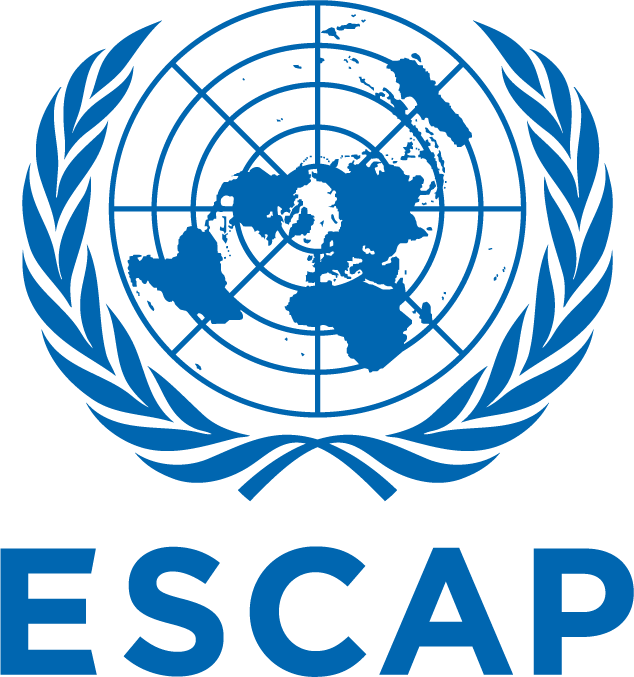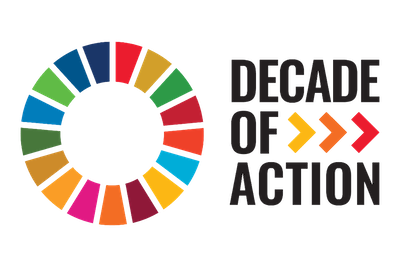ASEANCOF (DJF 2025) - Rainfall(2)
Celery Drupal Upload Id
0757d1a4-2f33-41b8-8112-501bd1c5efcd
Celery Geonode Upload Id
eee7be81-3945-4820-9a87-e1a4aeaf19a3
Country Code
ASEANCOF
Layer Parent Group
ASEANCOF
Map Legend
[{"label":"Above Normal > 90%","color":"#002673"},{"label":"Above Normal 80 - 90%","color":"#00389b"},{"label":"Above Normal 70 - 80%","color":"#004cc3"},{"label":"Above Normal 60 - 70%","color":"#1f75ec"},{"label":"Above Normal 50 - 60%","color":"#1b85ff"},{"label":"Above Normal 40 - 50%","color":"#52adff"},{"label":"Above Normal 35 - 40%","color":"#89ceff"},{"label":"Above Normal < 35%","color":"#ff00ff00"},{"label":"Below Normal < 35%","color":"#ff00ff00"},{"label":"Below Normal 35 - 40%","color":"#ffffcc"},{"label":"Below Normal 40 - 50%","color":"#ffea9a"},{"label":"Below Normal 50 - 60%","color":"#fece6a"},{"label":"Below Normal 60 - 70%","color":"#fea245"},{"label":"Below Normal 70 - 80%","color":"#fc6932"},{"label":"Below Normal 80 - 90%","color":"#e92b22"},{"label":"Below Normal > 90%","color":"#c20425"}]
Public
False
Processing Statuses
["S", "S", "S", "S", "S"]Scenarios Files Links
["https://geonode.thinkbluedata.co/datasets/geonode:rainfall_an_outlook_23_final/dataset_download","https://geonode.thinkbluedata.co/datasets/geonode:rainfall_bn_outlook_23_final/dataset_download"]Scenarios Layers URLs
["https://geonode.thinkbluedata.co/geoserver/gwc/service/wmts/rest/geonode:rainfall_an_outlook_23_final/geonode:rainfall_an_outlook_23_final/TBD_EPSG:900913/EPSG:900913:{z}/{y}/{x}?format=image/png","https://geonode.thinkbluedata.co/geoserver/gwc/service/wmts/rest/geonode:rainfall_bn_outlook_23_final/geonode:rainfall_bn_outlook_23_final/TBD_EPSG:900913/EPSG:900913:{z}/{y}/{x}?format=image/png"]Is Preset
No
Output Folder
20241206051914
ASEANCOF (DJF 2025) - Temperature(2)
Celery Drupal Upload Id
02008fae-e39e-4d83-918b-570f51affd02
Celery Geonode Upload Id
11fa5aac-b75e-41cd-be75-98156777fffd
Country Code
ASEANCOF
Layer Parent Group
ASEANCOF
Map Legend
[
{
"label": "Above Normal > 90%",
"color": "#c20425"
},
{
"label": "Above Normal 80 - 90%",
"color": "#e92b22"
},
{
"label": "Above Normal 70 - 80%",
"color": "#fc6932"
},
{
"label": "Above Normal 60 - 70%",
"color": "#fea245"
},
{
"label": "Above Normal 50 - 60%",
"color": "#fece6a"
},
{
"label": "Above Normal 40 - 50%",
"color": "#ffea9a"
},
{
"label": "Above Normal 35 - 40%",
"color": "#ffffcc"
},
{
"label": "Above Normal < 35%",
"color": "#ff00ff00"
},
{
"label": "Below Normal < 35%",
"color": "#ff00ff00"
},
{
"label": "Below Normal 35 - 40%",
"color": "#89ceff"
},
{
"label": "Below Normal 40 - 50%",
"color": "#52adff"
},
{
"label": "Below Normal 50 - 60%",
"color": "#1b85ff"
},
{
"label": "Below Normal 60 - 70%",
"color": "#1f75ec"
},
{
"label": "Below Normal 70 - 80%",
"color": "#004cc3"
},
{
"label": "Below Normal 80 - 90%",
"color": "#00389b"
},
{
"label": "Below Normal > 90%",
"color": "#002673"
}
]
{
"label": "Above Normal > 90%",
"color": "#c20425"
},
{
"label": "Above Normal 80 - 90%",
"color": "#e92b22"
},
{
"label": "Above Normal 70 - 80%",
"color": "#fc6932"
},
{
"label": "Above Normal 60 - 70%",
"color": "#fea245"
},
{
"label": "Above Normal 50 - 60%",
"color": "#fece6a"
},
{
"label": "Above Normal 40 - 50%",
"color": "#ffea9a"
},
{
"label": "Above Normal 35 - 40%",
"color": "#ffffcc"
},
{
"label": "Above Normal < 35%",
"color": "#ff00ff00"
},
{
"label": "Below Normal < 35%",
"color": "#ff00ff00"
},
{
"label": "Below Normal 35 - 40%",
"color": "#89ceff"
},
{
"label": "Below Normal 40 - 50%",
"color": "#52adff"
},
{
"label": "Below Normal 50 - 60%",
"color": "#1b85ff"
},
{
"label": "Below Normal 60 - 70%",
"color": "#1f75ec"
},
{
"label": "Below Normal 70 - 80%",
"color": "#004cc3"
},
{
"label": "Below Normal 80 - 90%",
"color": "#00389b"
},
{
"label": "Below Normal > 90%",
"color": "#002673"
}
]
Public
False
Processing Statuses
["S", "S", "S", "S", "S"]Scenarios Files Links
["https://geonode.thinkbluedata.co/datasets/geonode:temp_an_outlook_23_final/dataset_download","https://geonode.thinkbluedata.co/datasets/geonode:temp_bn_outlook_23_final/dataset_download"]Scenarios Layers URLs
["https://geonode.thinkbluedata.co/geoserver/gwc/service/wmts/rest/geonode:temp_an_outlook_23_final/geonode:temp_an_outlook_23_final/TBD_EPSG:900913/EPSG:900913:{z}/{y}/{x}?format=image/png","https://geonode.thinkbluedata.co/geoserver/gwc/service/wmts/rest/geonode:temp_bn_outlook_23_final/geonode:temp_bn_outlook_23_final/TBD_EPSG:900913/EPSG:900913:{z}/{y}/{x}?format=image/png"]Is Preset
No
Output Folder
20241205205333
ASEANCOF (DJF 2024) - Rainfall
Celery Drupal Upload Id
cc9d3f40-13cb-43ba-a8fb-5674d17e333d
Celery Geonode Upload Id
1b849806-e5dd-4fdc-a365-2fb929bbc66b
Country Code
ASEANCOF
Layer Parent Group
ASEANCOF
Map Legend
[{"label":"Above Normal > 90%","color":"#002673"},{"label":"Above Normal 80 - 90%","color":"#00389b"},{"label":"Above Normal 70 - 80%","color":"#004cc3"},{"label":"Above Normal 60 - 70%","color":"#1f75ec"},{"label":"Above Normal 50 - 60%","color":"#1b85ff"},{"label":"Above Normal 40 - 50%","color":"#52adff"},{"label":"Above Normal 35 - 40%","color":"#89ceff"},{"label":"Above Normal < 35%","color":"#ff00ff00"},{"label":"Below Normal < 35%","color":"#ff00ff00"},{"label":"Below Normal 35 - 40%","color":"#ffffcc"},{"label":"Below Normal 40 - 50%","color":"#ffea9a"},{"label":"Below Normal 50 - 60%","color":"#fece6a"},{"label":"Below Normal 60 - 70%","color":"#fea245"},{"label":"Below Normal 70 - 80%","color":"#fc6932"},{"label":"Below Normal 80 - 90%","color":"#e92b22"},{"label":"Below Normal > 90%","color":"#c20425"}]
Public
True
Processing Statuses
["S", "S", "S", "S", "S"]Scenarios Files Links
["https://geonode.thinkbluedata.co/datasets/geonode:rainfall_an_outlook_23_draft/dataset_download","https://geonode.thinkbluedata.co/datasets/geonode:rainfall_bn_outlook_23_draft/dataset_download"]Scenarios Layers URLs
["https://geonode.thinkbluedata.org/geoserver/gwc/service/wmts/rest/geonode:rainfall_an_outlook_23_draft/geonode:rainfall_an_outlook_23_draft/TBD_EPSG:900913/EPSG:900913:{z}/{y}/{x}?format=image/png","https://geonode.thinkbluedata.org/geoserver/gwc/service/wmts/rest/geonode:rainfall_bn_outlook_23_draft/geonode:rainfall_bn_outlook_23_draft/TBD_EPSG:900913/EPSG:900913:{z}/{y}/{x}?format=image/png"]Is Preset
Yes
Output Folder
20241128044000
ASEANCOF (DJF 2024) - Temperature
Celery Drupal Upload Id
62a0cc18-89de-4081-abc3-9f33171965bd
Celery Geonode Upload Id
e6e451f5-8927-47ef-a5fc-f6b7f55fc439
Country Code
ASEANCOF
Layer Parent Group
ASEANCOF
Map Legend
[
{
"label": "Above Normal > 90%",
"color": "#c20425"
},
{
"label": "Above Normal 80 - 90%",
"color": "#e92b22"
},
{
"label": "Above Normal 70 - 80%",
"color": "#fc6932"
},
{
"label": "Above Normal 60 - 70%",
"color": "#fea245"
},
{
"label": "Above Normal 50 - 60%",
"color": "#fece6a"
},
{
"label": "Above Normal 40 - 50%",
"color": "#ffea9a"
},
{
"label": "Above Normal 35 - 40%",
"color": "#ffffcc"
},
{
"label": "Above Normal < 35%",
"color": "#ff00ff00"
},
{
"label": "Below Normal < 35%",
"color": "#ff00ff00"
},
{
"label": "Below Normal 35 - 40%",
"color": "#89ceff"
},
{
"label": "Below Normal 40 - 50%",
"color": "#52adff"
},
{
"label": "Below Normal 50 - 60%",
"color": "#1b85ff"
},
{
"label": "Below Normal 60 - 70%",
"color": "#1f75ec"
},
{
"label": "Below Normal 70 - 80%",
"color": "#004cc3"
},
{
"label": "Below Normal 80 - 90%",
"color": "#00389b"
},
{
"label": "Below Normal > 90%",
"color": "#002673"
}
]
{
"label": "Above Normal > 90%",
"color": "#c20425"
},
{
"label": "Above Normal 80 - 90%",
"color": "#e92b22"
},
{
"label": "Above Normal 70 - 80%",
"color": "#fc6932"
},
{
"label": "Above Normal 60 - 70%",
"color": "#fea245"
},
{
"label": "Above Normal 50 - 60%",
"color": "#fece6a"
},
{
"label": "Above Normal 40 - 50%",
"color": "#ffea9a"
},
{
"label": "Above Normal 35 - 40%",
"color": "#ffffcc"
},
{
"label": "Above Normal < 35%",
"color": "#ff00ff00"
},
{
"label": "Below Normal < 35%",
"color": "#ff00ff00"
},
{
"label": "Below Normal 35 - 40%",
"color": "#89ceff"
},
{
"label": "Below Normal 40 - 50%",
"color": "#52adff"
},
{
"label": "Below Normal 50 - 60%",
"color": "#1b85ff"
},
{
"label": "Below Normal 60 - 70%",
"color": "#1f75ec"
},
{
"label": "Below Normal 70 - 80%",
"color": "#004cc3"
},
{
"label": "Below Normal 80 - 90%",
"color": "#00389b"
},
{
"label": "Below Normal > 90%",
"color": "#002673"
}
]
Public
True
Processing Statuses
["S", "S", "S", "S", "S"]Scenarios Files Links
["https://geonode.thinkbluedata.co/datasets/geonode:temp_an_outlook_23_draft/dataset_download","https://geonode.thinkbluedata.co/datasets/geonode:temp_bn_outlook_23_draft/dataset_download"]Scenarios Layers URLs
["https://geonode.thinkbluedata.org/geoserver/gwc/service/wmts/rest/geonode:temp_an_outlook_23_draft/geonode:temp_an_outlook_23_draft/TBD_EPSG:900913/EPSG:900913:{z}/{y}/{x}?format=image/png","https://geonode.thinkbluedata.org/geoserver/gwc/service/wmts/rest/geonode:temp_bn_outlook_23_draft/geonode:temp_bn_outlook_23_draft/TBD_EPSG:900913/EPSG:900913:{z}/{y}/{x}?format=image/png"]Is Preset
Yes
Output Folder
20241127220348
TPCF (DJF 2025) - Temperature
Celery Drupal Upload Id
30006dee-c3f9-4cf6-bacf-5d029a7f63ea
Celery Geonode Upload Id
0102d491-3ba4-412d-8d7a-2eb27cfe4a51
Country Code
TPCF
Layer Parent Group
TPCF
Map Legend
[
{
"label": "Above Normal > 90%",
"color": "#c20425"
},
{
"label": "Above Normal 80 - 90%",
"color": "#e92b22"
},
{
"label": "Above Normal 70 - 80%",
"color": "#fc6932"
},
{
"label": "Above Normal 60 - 70%",
"color": "#fea245"
},
{
"label": "Above Normal 50 - 60%",
"color": "#fece6a"
},
{
"label": "Above Normal 40 - 50%",
"color": "#ffea9a"
},
{
"label": "Above Normal 35 - 40%",
"color": "#ffffcc"
},
{
"label": "Above Normal < 35%",
"color": "#ff00ff00"
},
{
"label": "Below Normal < 35%",
"color": "#ff00ff00"
},
{
"label": "Below Normal 35 - 40%",
"color": "#89ceff"
},
{
"label": "Below Normal 40 - 50%",
"color": "#52adff"
},
{
"label": "Below Normal 50 - 60%",
"color": "#1b85ff"
},
{
"label": "Below Normal 60 - 70%",
"color": "#1f75ec"
},
{
"label": "Below Normal 70 - 80%",
"color": "#004cc3"
},
{
"label": "Below Normal 80 - 90%",
"color": "#00389b"
},
{
"label": "Below Normal > 90%",
"color": "#002673"
}
]
{
"label": "Above Normal > 90%",
"color": "#c20425"
},
{
"label": "Above Normal 80 - 90%",
"color": "#e92b22"
},
{
"label": "Above Normal 70 - 80%",
"color": "#fc6932"
},
{
"label": "Above Normal 60 - 70%",
"color": "#fea245"
},
{
"label": "Above Normal 50 - 60%",
"color": "#fece6a"
},
{
"label": "Above Normal 40 - 50%",
"color": "#ffea9a"
},
{
"label": "Above Normal 35 - 40%",
"color": "#ffffcc"
},
{
"label": "Above Normal < 35%",
"color": "#ff00ff00"
},
{
"label": "Below Normal < 35%",
"color": "#ff00ff00"
},
{
"label": "Below Normal 35 - 40%",
"color": "#89ceff"
},
{
"label": "Below Normal 40 - 50%",
"color": "#52adff"
},
{
"label": "Below Normal 50 - 60%",
"color": "#1b85ff"
},
{
"label": "Below Normal 60 - 70%",
"color": "#1f75ec"
},
{
"label": "Below Normal 70 - 80%",
"color": "#004cc3"
},
{
"label": "Below Normal 80 - 90%",
"color": "#00389b"
},
{
"label": "Below Normal > 90%",
"color": "#002673"
}
]
Public
True
Processing Statuses
["S", "S", "S", "S", "S"]Scenarios Files Links
["https://geonode.thinkbluedata.co/datasets/geonode:an_t2mdjf_9f90429274942508b2bc1f6d53f2015b/dataset_download","https://geonode.thinkbluedata.co/datasets/geonode:bn_t2mdjf_f9e57a426e542c028f9be4f9581c1df9/dataset_download"]Scenarios Layers URLs
["https://geonode.thinkbluedata.org/geoserver/gwc/service/wmts/rest/geonode:an_t2mdjf_9f90429274942508b2bc1f6d53f2015b/geonode:an_t2mdjf_9f90429274942508b2bc1f6d53f2015b/TBD_EPSG:900913/EPSG:900913:{z}/{y}/{x}?format=image/png","https://geonode.thinkbluedata.org/geoserver/gwc/service/wmts/rest/geonode:bn_t2mdjf_f9e57a426e542c028f9be4f9581c1df9/geonode:bn_t2mdjf_f9e57a426e542c028f9be4f9581c1df9/TBD_EPSG:900913/EPSG:900913:{z}/{y}/{x}?format=image/png"]Is Preset
Yes
Output Folder
20241124084846


